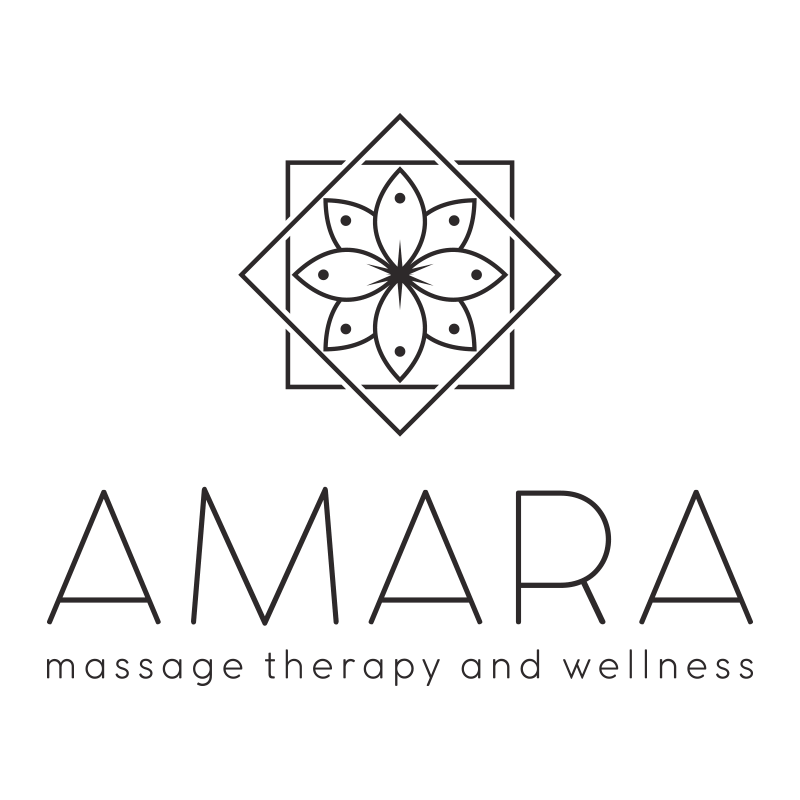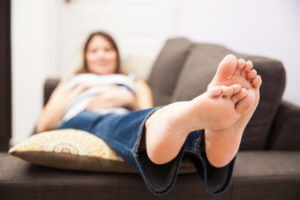*This article was originally featured in Massage & Fitness Magazine
5 MINUTE READ
There are many misconceptions about prenatal massage in the massage therapy community. Some of these ideas may deny the benefits of massage to pregnant women who seek it and some of this misinformation could actually do harm by causing serious emotional distress. Let’s look at one common misconception, examine how it may have come about, look at what the evidence tells us, and consider how.
Many massage therapists have been taught that massage is contraindicated during the first trimester of pregnancy. The reason given is fear of causing miscarriage. This is probably based on fear of litigation rather than any actual potential that massage could cause harm. Most miscarriages occur during the first trimester of pregnancy and the most common cause is genetic abnormalities. Many spontaneous abortions occur before the woman knows she is pregnant. Among women who know they are pregnant, the rate of miscarriage is 15 to 20 percent.1
Since most miscarriages occur during the first trimester, massage therapists may fear that if a woman miscarries after receiving massage, she may attribute it to the massage. Most women do not know they are pregnant until they are well into their second trimester. The only way to completely avoid massage during the first trimester is to refuse massage to all women of childbearing age, which is something most massage therapists would agree is excessive.
However, there is no reason to think that massage will cause miscarriage. Women engage in sports, exercise, household chores, sexual activities, and other tasks of daily living while pregnant. Massage is no more vigorous or dangerous than any of these activities. If a woman is not restricted from normal activities due to other complications, it is not necessary to deny her massage during her first or any trimester.
Unfortunately, many women are routinely denied massage because they are pregnant. One of my clients related how she’d had a lot of stress at work and sought relief by booking an appointment for massage. Instead, she was turned away when she revealed she was pregnant. Already distressed, she broke down in tears. Fortunately, she found me online and I was able to get her in promptly. She left feeling relieved and relaxed.
How many pregnant women are turned away unnecessarily because this massage myth persists? It’s time we lay it to rest. There is no reason to believe that massage is hazardous to a woman or her child at any stage of pregnancy, provided that the mother is otherwise healthy and has no complications.
Can ankle massage cause a miscarriage?
Perhaps one of the worst prenatal massage myths is that massaging the ankles could cause a woman to miscarry or go into labor prematurely, and they should be avoided. There is no evidence or plausible mechanism to support this claim and perpetuation of this misinformation could potentially cause harm. The reason given is a belief in “reflex points” or acupuncture points near the lateral malleolus that allegedly correspond to the uterus, and massaging these points will stimulate the uterus, leading to miscarriage or premature labor. It is also claimed that massaging these points can induce labor.
What does the evidence tell us? There is no physiological reason to believe that acupuncture meridians or reflexology points exist. Consider this: if inducing miscarriage or labor were as easy as rubbing the ankles, unplanned pregnancies would not present a problem for women, and there would be no need to medically induce labor.
While there is no research on the effects of massaging these reflex points with the hands, there is a small body of related research from which we can draw some conclusions. A Turkish study of eighty women (Coban 2010) found that daily foot massage reduced edema of late pregnancy in the lower legs compared with a control group. No adverse effects are mentioned in the abstract.2
Meanwhile, a 2013 Cochrane review looked at studies using acupuncture to induce labor. 3 The review included 14 studies with data reporting on 2,220 women and concluded that there was no difference in the number of caesarean deliveries between the acupuncture group and usual care. Surprisingly, the length of labor was actually longer in the group receiving acupuncture compared to the group receiving usual care. In terms of inducing labor, there were no statistically significant differences. If acupuncture to the ankles on these “reflex points” did not stimulate labor, it seems unlikely that massage to the ankles would be any more effective.
Some massage therapists, on hearing this news, will respond that they will continue to avoid the ankles just in case. However, there is a potentially serious problem with this irrational response.
Many pregnant women experience swelling and discomfort in their feet, ankles, and lower legs and specifically request massage to alleviate it. Denying them not only withholds relief but may even cause harm. If a woman were told that ankle massage is contraindicated and she later has a miscarriage, she might later remember a time when she had rubbed her ankles and come to the erroneous conclusion that she caused the miscarriage herself and live with terrible guilt. Massage misinformation does have the potential to cause harm.
“How many pregnant women are turned away unnecessarily because this massage myth persists? It’s time we lay it to rest. There is no reason to believe that massage is hazardous to a woman or her child at any stage of pregnancy”
What can we say with confidence about massage during pregnancy?
I asked some clients about their reasons for getting prenatal massage and what they derived from it. The most common reasons were that massage gave relief to the physical discomforts of pregnancy, and they also enjoyed the profound sense of relaxation and of being nurtured. One client described how her back felt “compressed.” After the massage, she felt “stretched out” and was able to stand and sit more upright.
Another said that massage gave a welcoming distraction from nausea. Indeed, Scandinavian researchers who interviewed women hospitalized for severe nausea also reported this effect.4 Other documented benefits of prenatal include reduced symptoms of depression and anxiety and reduced leg and back pain.5
In the chapter on Pregnancy and Labor in the book Massage Therapy: Integrating Research and Practice by Dryden and Moyer, chapter author Amanda Baskwill notes the emerging link between maternal mood and fetal development.6 Ven den Bergh et al. (2004), state that a number of studies have suggested a link between maternal stress during pregnancy and later cognitive, behavioral, and emotional problems in the child.7 Their abstract concludes:
“The magnitude of the long-term effects of antenatal maternal anxiety/ stress on the child is substantial. Programs to reduce maternal stress in pregnancy are therefore warranted.”
Other research has suggested that maternal anxiety and depression may cause greater incidence of health problems in children. Cookson (2009) found, “a relationship between maternal anxiety during pregnancy and increased likelihood of asthma in children.” 8
A search of maternal depression and child health on Google Scholar turns up thousands of studies documenting the deleterious effect of maternal depression on child development and health. Since one of the most well documented effects of massage therapy is a positive effect on anxiety and depression (Moyer 2008), massage therapy might be one means of improving both maternal and child health that could be accessed even in areas that lack medical technology.9
Massage therapy has generally been found to be safe. Ernst (2003) found few reports of adverse effects and when they have occurred, most often it has been at the hands of an untrained person or the result of “exotic” techniques.10 Still, massage therapists should inquire about the mother’s health history at intake and verify that the pregnancy is progressing normally, and there are no complicating factors. If there are any symptoms out of the ordinary, the mother should be advised to consult her physician before proceeding. However, there is no reason to deny massage to a healthy woman experiencing a normal pregnancy.
Massage therapists have treated pregnant women for many years without adverse effects. Prenatal massage has been reported to relieve pain, reduce anxiety and depression, and generally leave the mother feeling relaxed and nurtured. Increasing evidence on the effect of maternal stress on child development suggests that massage therapy could play a role in maternal and neonatal health.
However, for massage to be fully utilized in the care and well-being of pregnant women, more research is needed to support the potential role of prenatal massage and therapists need to be well-informed.
Since little is yet known about the specific effects of massage therapy or exactly by what mechanism it works, massage therapists should exercise caution in how they communicate with pregnant clients and refrain from dispensing inaccurate information. Massage therapy is generally safe when administered by a properly trained professional. There is no reason for a massage therapist to fear giving massage to a healthy woman experiencing a normal pregnancy.
*This article was originally featured in Massage & Fitness Magazine
ABOUT THE AUTHOR
Alice Sanvito, LMT is a guest blogger for Amara Massage Therapy & Wellness and regular contributor for MASSAGE & FITNESS MAGAZINE.
Alice is a massage therapist who maintains a private practice in St. Louis, MO, She has been committed to client-centered, science compatible massage therapy since 1991. She assisted at NMT seminars for the NMT Center of St. Petersburg, FL, for 10 years and studied Russian Medical and Sports Massage with Zhenya Kurashova Wine for over 10 years, under whose direction she taught Russian Massage for three years. Most recently she has studied DNM under Diane Jacobs. Alice has a particular interest in pain rehabilitation and enjoys working with performing artists, athletes, and pregnant women. When not devoted to her practice, you can find her playing old time music and dancing every chance she gets. Learn more about Alice’s practice and read her BLOG.
References:
1. Medline Plus: Miscarriage http://www.nlm.nih.gov/
medlineplus/ency/article/001488.htm
2. Coban, A. and Sirin, A. 2010. Effect of foot massage to
decrease physiological lower leg oedema in late
pregnancy: a randomized controlled trial in Turkey. Int J
Nurs Pract. 2010 Oct. http://www.ncbi.nlm.nih.gov/
pubmed/20854342
3. Smith CA1, Crowther CA, Grant SJ. 2013.Acupuncture
for induction of labour. Cochrane Database Syst Rev.
2013. Aug 15
http://www.ncbi.nlm.nih.gov/pubmed/23945980
4. Ågren, A. and Berg, M. 2006. Tactile massage and
severe nausea and vomiting during pregnancy – women’s
experiences. Scandinavian Journal of Caring Sciences,
Volume 20, Issue 2, June 2006. Article first published
online: 24 MAY 2006
http://onlinelibrary.wiley.com/doi/10.1111/
j.1471-6712.2006.00394.x/abstract
5. Field, T. 2010. Pregnancy and labor massage therapy.
Expert Review of Obstetrics and Gynecology, 5, 177-181.
6. Dryden, T. and Moyer, CA. Massage Therapy: Integrating
Research and Practice. Human Kinetics, 2012.
7. Van den Bergh et al. 2005. Antenatal maternal anxiety
and stress and the neurobehavioural development of the
fetus and child: links and possible mechanisms. A review.
Neuroscience & Biobehavioral Reviews, Volume 29, Issue
2, April 2005.
http://www.sciencedirect.com/science/article/pii/
S0149763404001307
[8] Cookson, H., et al. 2009. Mothers’ anxiety during
pregnancy is associated with asthma in their children.
Journal of Allergy and Clinical Immunology, Volume 123,
Issue 4, April 2009. http://www.sciencedirect.com/
science/article/pii/S0091674909001584
[9] Moyer, CA. 2008. Affective massage therapy. Int J Ther
Massage Bodywork. 2008; 1(2): 3–5. Published online
Dec 15, 2008. http://www.ncbi.nlm.nih.gov/pmc/
articles/PMC3091449/
[10] Ernst, E. 2003. The safety of massage therapy.
Rheumatology. Volume 42, Issue 9
http://rheumatology.oxfordjournals.org/
content/42/9/1101.short

